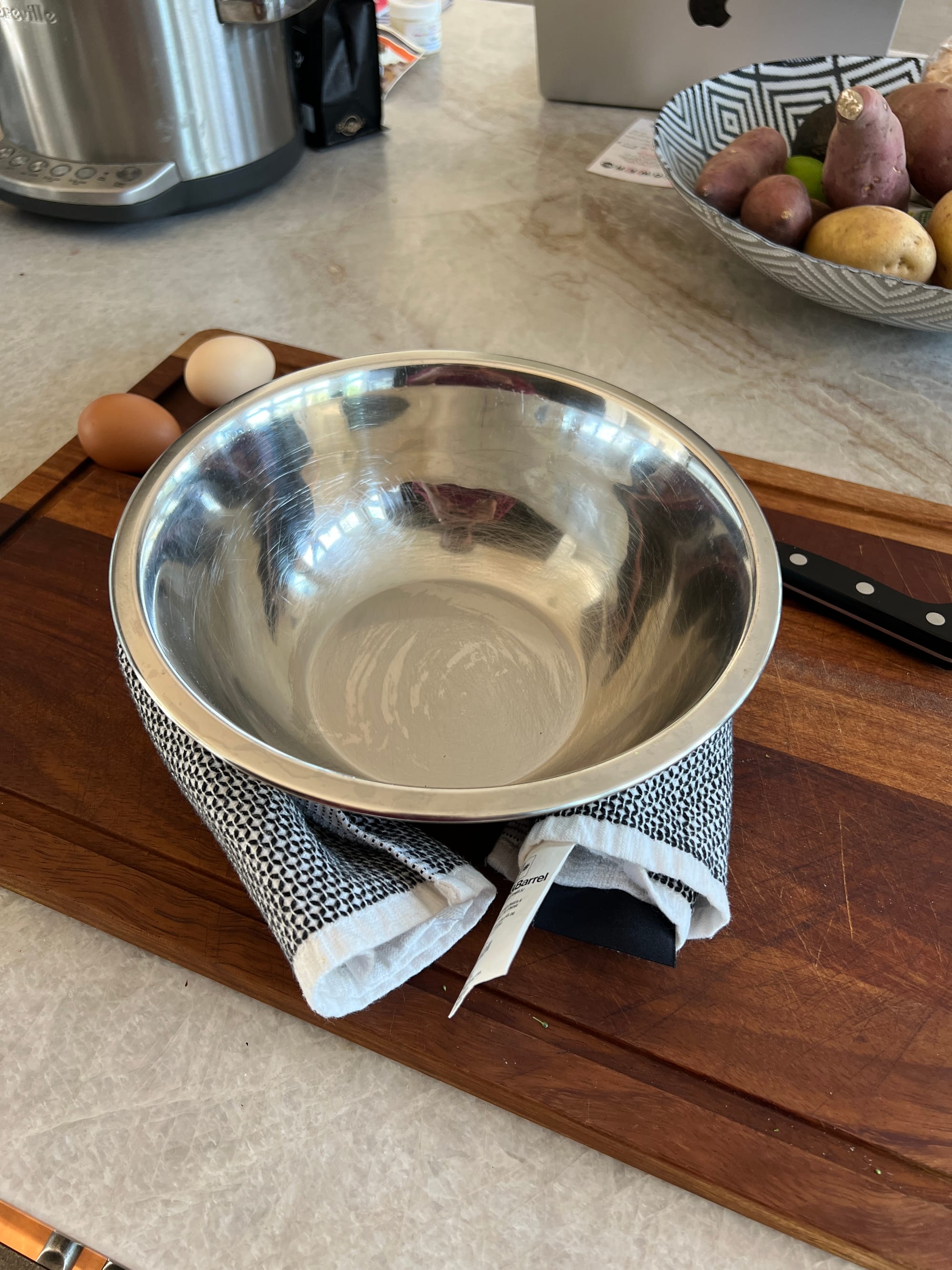Notes
Homemade mayo is much better than anything you can buy at the store. But unfortunately, mayo made with olive oil (rather than seed oils) often comes out quite bitter.
It turns out that this is caused by the blades of a blender or food processor. If you make the mayo by hand using a whisk, you avoid the bitterness entirely. I've tried this myself and it really works (and is much easier than you might think).
This is great on its own, but I love adding some additional flavor to the mix (chopped fresh herbs, lemon zest, Calabrian chiles, etc). This also serves as a great base for various mayo-based sauces and dressings.
Ingredients
- 1 egg yolk
- 1/2 - 1 cup olive oil
- 1 tsp dijon mustard
- 1 tbsp lemon juice or white wine vinegar
- salt
This works best if your olive oil has a pour spout that allows you to slowly drip in the oil. I use a bottle with a pour spout from Zimms Organics that works great, or you can get one of these badass oil cruets. If you don’t have that available, use your thumb to slow the drizzle of oil into the bowl as you whisk.
Because you’re using raw eggs here, you should buy the highest-quality pastured eggs you can find. An egg that’s allowed to come up to room temp will emulsify much better than a cold one, so use room temperature eggs.
Finally, one egg yolk can usually hold together up to a whole cup of oil. If you plan to use more than that to make a big batch of this stuff, start with two yolks.
Process
You need to whisk pretty hard in order to get the mix to emulsify, so you’ll need a stable bowl. You can create a little nest with a dish towel (it’s even steadier if the dish towel is damp). Or you can just have someone else hold the bowl as you drizzle and whisk.


Separate out 1 egg yolk from a whole egg. Add just the yolk to your bowl.
Add in the mustard, lemon juice, and salt, and whisk to combine.


Start whisking, and then slowly start drizzling in the olive oil.
You should maintain a slow, steady stream, whisking the whole time.
The process looks like this:
As you drizzle the oil in, the mayo should start to come together.
There’s no correct amount of oil here— you should add enough to get a thick, creamy consistency that holds its peaks, like the one below.
Once you’re there, taste the mayo and then whisk in more salt or vinegar until it tastes balanced.
At this point the mayo is complete. It’s great on its own and will store in an airtight container in the fridge for at least several weeks.


I also love using this as a base to build other sauces and dips.
One of my favorites is with a couple tbsp of Calabrian chiles and a bunch of lemon zest. It's also great mixed with hot sauce, various chile pastes, and chopped fresh herbs.
Enjoy!



